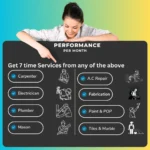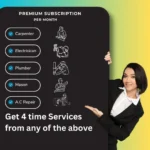On-Page SEO Checklist for 2025
On-page SEO is the foundation of a strong search engine presence. It ensures that your content, structure, and user experience are optimized so search engines can index and rank your pages accurately.
Here’s the complete on-page SEO checklist for 2025 to help you improve your blog posts and website rankings.
1. Use a Focus Keyword Strategically
Start by selecting a primary keyword that matches user intent. Place it in:
- Title
- Meta description
- URL
- First paragraph
- At least one subheading
Don’t overuse it. Aim for a keyword density of 1–2%.
2. Write a Clear, Clickable SEO Title
Your title should:
- Be under 60 characters
- Start with your focus keyword
- Use a power word if possible (e.g., “Complete,” “Proven,” “Checklist”)
- Create curiosity or urgency
3. Optimize Your Meta Description
Meta descriptions should:
- Be 150–160 characters long
- Include your focus keyword
- Clearly explain the benefit of reading the page
- Use a call to action like “Learn how,” “Download now,” or “Explore”
4. Create a Short, Keyword-Rich URL
A good URL for this post would be:
bukkry.in/on-page-seo-checklist-2025
Avoid stop words like “and,” “the,” or “of.” Keep it short and relevant.
5. Structure Your Content with Headings
Use headings (H2, H3) to break up content logically. Every major section should have an H2, and sub-points should use H3. This helps both users and search engines.
Example subheadings:
- What is On-Page SEO?
- Why On-Page SEO Still Matters
- The Ultimate Checklist
6. Write Engaging, Original Content
Google rewards helpful, high-quality content. Avoid copy-paste or AI-written fluff. Your goal should be to solve the reader’s query completely and clearly.
For example, if you’re just getting started with SEO, you might also want to check out:
Top 10 SEO Tips for Beginners
7. Use Internal Links
Internal links help users navigate your site and keep them engaged longer. Link to relevant content naturally.
Example: If you’re new to SEO, begin with the basics here:
What is SEO and How It Works
8. Add External Links to Authority Sources
Link to trusted websites like:
- Google Search Central
- Moz
- Neil Patel
Always open external links in a new tab and use rel="nofollow" where appropriate.
9. Optimize Images (If You Use Them)
Even if you’re not adding images now, here’s how to optimize them in the future:
- Use descriptive filenames (e.g., on-page-seo-chart.jpg)
- Add ALT text with keywords
- Compress images for faster load speed
10. Improve Site Speed & Mobile Friendliness
Use tools like:
- Google PageSpeed Insights
- GTmetrix
- Mobile-Friendly Test
Faster loading improves user experience and rankings.
11. Add a Strong Call to Action (CTA)
Always guide your readers to take the next step.
If you want to master all aspects of SEO with real tools and examples, enroll in our
SEO Mastery Course on Bukkry
It’s ideal for beginners, freelancers, and digital marketers looking to upskill.
Final Thoughts
On-page SEO may seem like a checklist, but it’s the backbone of successful content marketing. When done right, it can lead to better rankings, more traffic, and higher conversions.
Use this checklist every time you publish a post — and watch your visibility grow.


 Subscription
Subscription Performance Subscription
Performance Subscription Premium Subscription
Premium Subscription Base Subscription
Base Subscription Furniture
Furniture Bed
Bed Kitchen
Kitchen Almirah and Wardrobe
Almirah and Wardrobe LCD Cabinet
LCD Cabinet Verified Partner
Verified Partner Earn Money
Earn Money

 AI & Data Science
AI & Data Science Business & Startup
Business & Startup Cybersecurity & Cloud
Cybersecurity & Cloud E-commerce & Sales
E-commerce & Sales Marketing & Growth
Marketing & Growth Web/App Development
Web/App Development